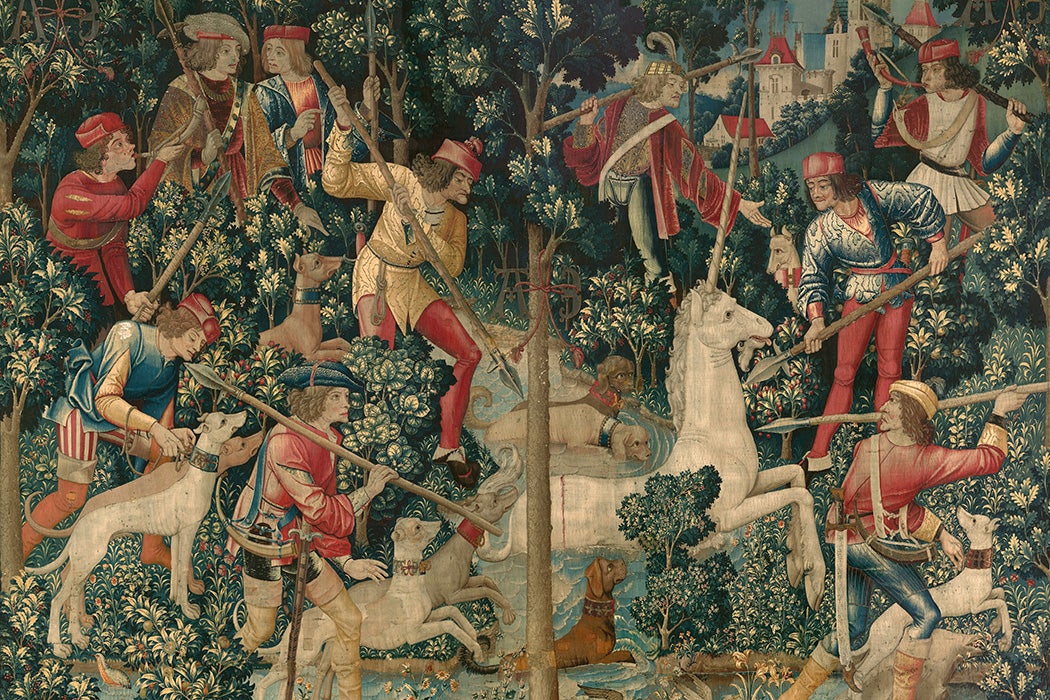When the dismissal bell rings at our neighborhood elementary school, unicorns are everywhere. They’re prancing on my daughter’s matching backpack and lunchbox, dangling, sequined, on keychains. They’re on dresses and shirts and folders and on the covers of books for new readers. Unicorn horns, often in the center of synthetic rainbow manes, protrude from sneakers, wool hats, headbands, and bike helmets. Some of the unicorns have wings. All of them are cheery and bright, exuding a combination of whimsy, harmlessness, and purity.
While unicorns seem to be enjoying a resurgence among the four-to-eight-year-old set, they’re certainly not new. And, while unicorns’ earliest stories include an alchemical power to purify water and grant eternal youth, the breadth of unicorn mythology is more complicated than the array of children’s products on display at the playground suggests.
Weekly Newsletter
In ancient China, the unicorn (called the qilin) was said to appear at the birth of a sage. In the fifth century BCE, Greek historian Ctesias described the three-color pattern of the mystical creature and its single horn. The scholar Francesca Tagliatesta points out that Ctesias almost certainly borrowed from Persian stories dating to the ninth through eighth centuries BCE.
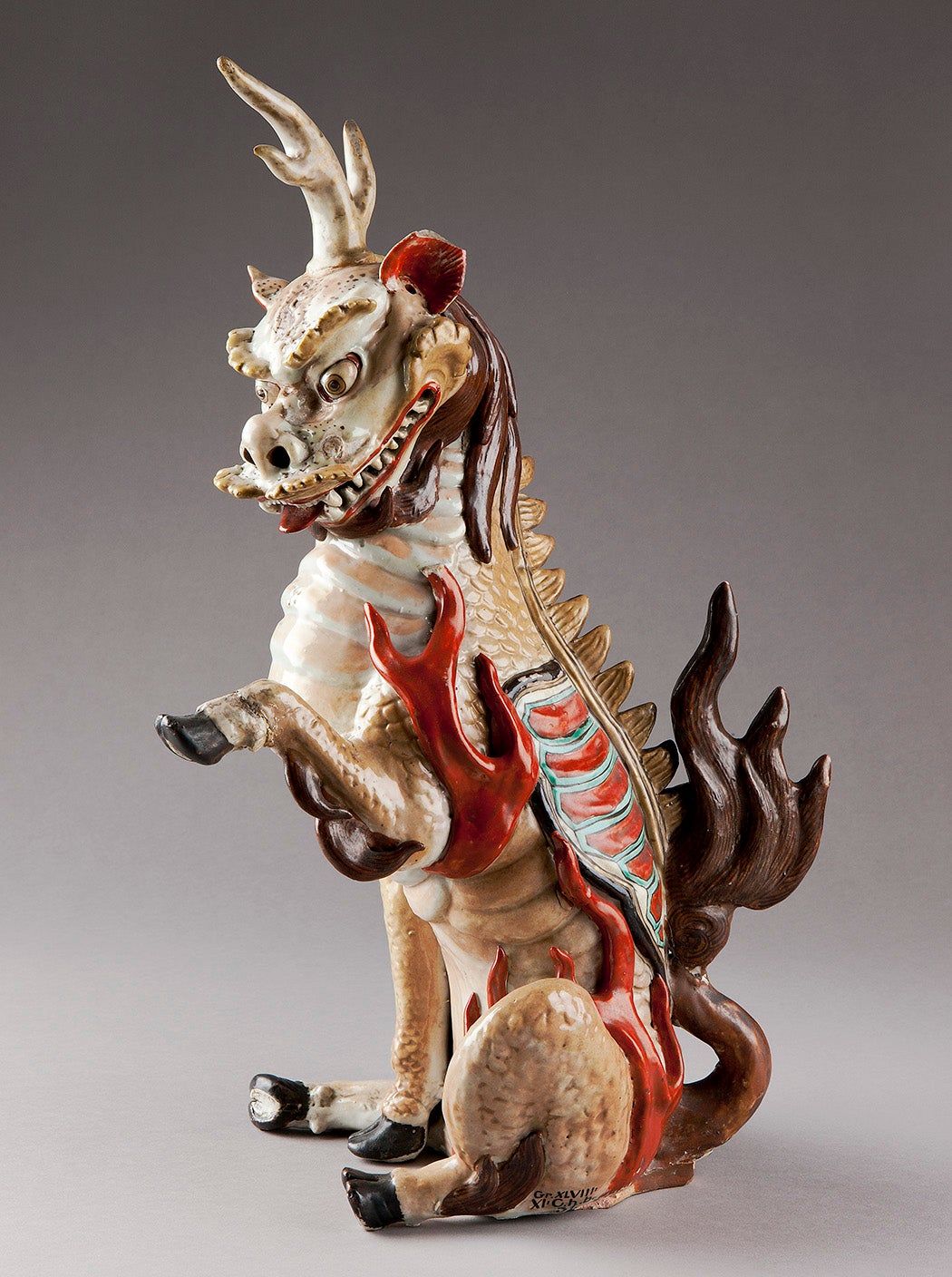
Representations of a rhinoceros-like creature or of a single-horned horse, goat, or even wolf appear on statues, pottery, mosaics, and tapestries from India to Africa to Europe. These creatures have by turn—and somewhat paradoxically—been associated with purity, fertility, seduction, healing, sacrifice, immortality, divinity, and, by the time of the Renaissance in Europe, were seen as a metaphor for Christ himself.
Among the most iconic representations of unicorns are the tapestries on display at the Metropolitan Museum of Art’s Cloisters. The seven panels in The Hunt of the Unicorn tell the story of a royal hunt and capture of a white unicorn. The exact date of the tapestries’ creation is unknown. Writing about the Museum’s acquisition of the pieces, Metropolitan Museum of Art conservator Kathrin Colburn estimates their origin in the southern Netherlands between 1495 and 1500, possibly a celebration of the marriage of Anne of Brittany and Louis XII. In the late fifteenth century, details like the type of flowers in the background, the symbols on robes and shields, and the choreography of the hunting party would have conveyed both Christian and secular symbolic meanings.
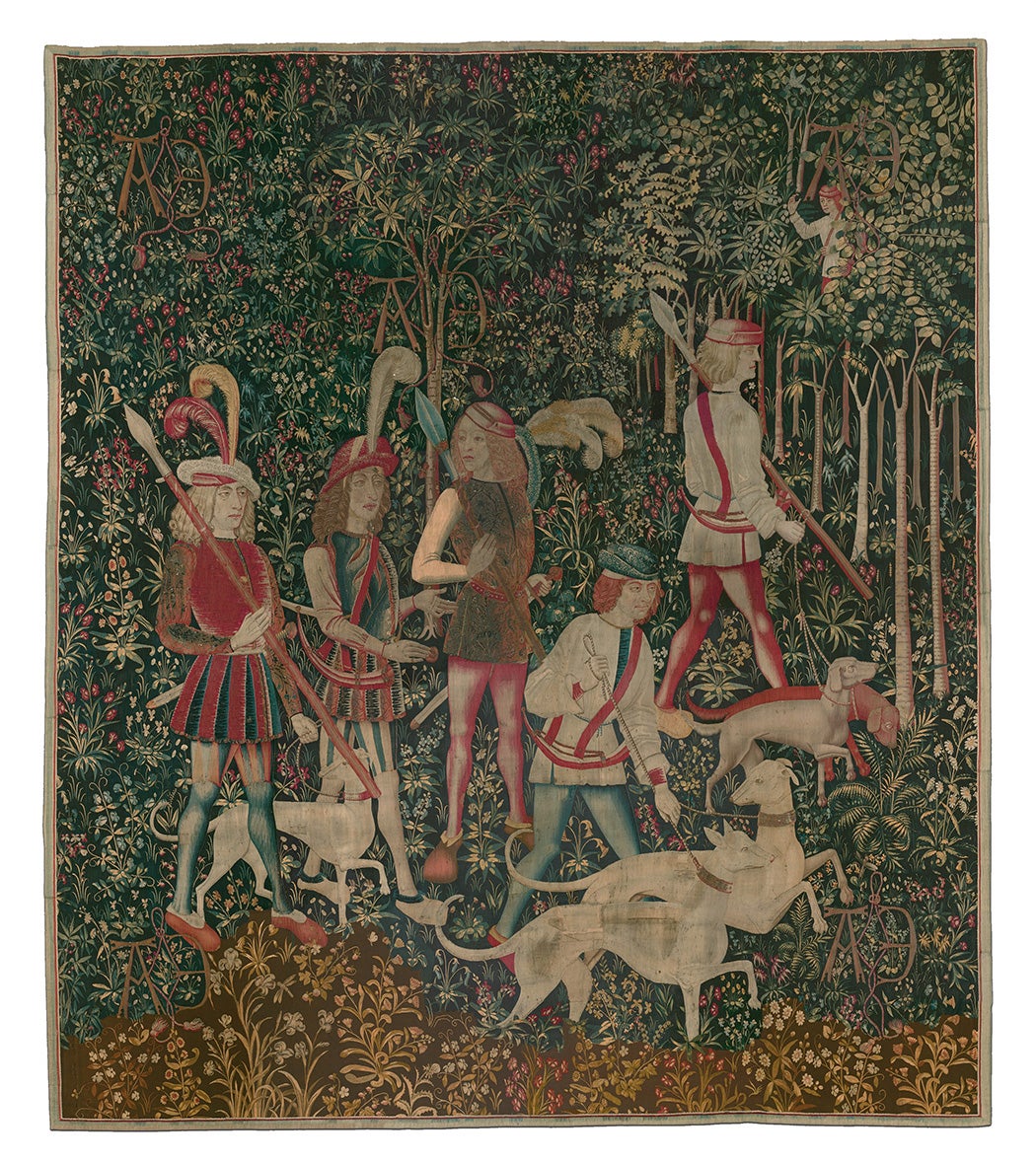
When these tapestries were commissioned, the secular and religious narratives about unicorns had just begun to come together. Writing for Mythlore on the history of the unicorn’s connection with romance, sexuality, and marriage, romance writer Teresa Noelle Roberts also suggests that the tapestries were commissioned in honor of the marriage between Anne of Brittany and Louis XII. In tracing the history of the unicorn’s iconographic connection to what she calls the “Virgin-Capture legend,” Roberts credits poet and classicist Robert Graves with first articulating the connection between the unicorn and virginal purity: :
The unicorn represented the moon in its struggle against its enemy, the sun lion… [which Graves] traces back to legends about the ancient Great Goddess who was both the moon-goddess and the goddess of wisdom. In this context, the virgin who captures the unicorn represents the Great Goddess “capturing” the seeker of truth.
By the time of the tapestries, that Virgin-Capture legend had come to be most commonly understood in a narrative framed in the tradition of actual royal stag hunts. In the unicorn version, however, hunters wishing to capture a unicorn had to lure it to the forest with a naked virgin tied to a tree. Here, either due to its arousal by the maiden or its purity matching hers, the unicorn could be subdued and then captured. In some myths the unicorn sucks on the virgin’s breasts and falls asleep with what Roberts euphemistically terms “his horn in a very symbolic position.” In other versions of this legend, the unicorn’s attraction to virgins is explained in terms of opposing humours: the “lewd” unicorn is drawn to the virgin’s purity (rather than her sexuality), and the elusive creature is finally captured because of the virgin’s “aura of chastity.”
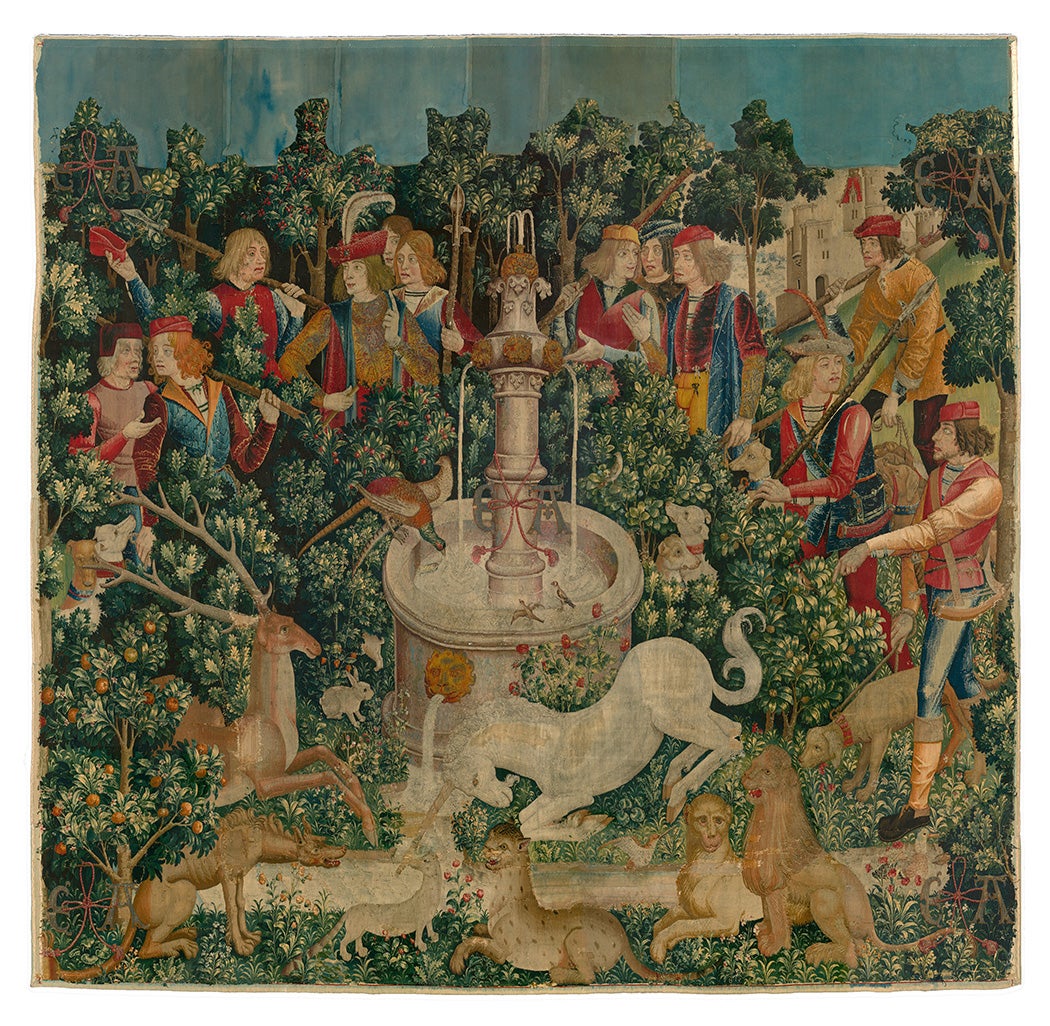
When the tapestries were commissioned, Christians had adapted the mythical animal to fit narratives about Christ. The King James Bible translates the Hebrew word re’em, often understood by contemporary Biblical scholars to refer to the two-horned oryx, as unicorn. Saint Basil claimed that “the unconquerable nature of God is likened to that of a unicorn,” and Saint Ambrose inquired “who is the Unicorn but the only begotten son of God?” Roberts explains that common thinking posited that “God was born on earth in the person of Jesus Christ through the Virgin Mary. In effect, He, like the unicorn, was captured by a maiden.”
Somewhat surprisingly, though, as unicorn iconography became increasingly aligned with Christian theology (the horn was compared to the cross, the sacrifice of the unicorn compared to Christ’s death, the unicorn’s power to purify to Christ as the redeemer), romantic and sexual elements of unicorn stories remained and often coexisted with the religious allegory in a single story or piece of art.

In “Plant Symbolism in the Unicorn Tapestries,” the art historian Eleanor Marquand points out that, like unicorn mythology more generally, the rich botanical symbols in the Cloister tapestries draw from both religious and secular traditions. She highlights the Christian significance of plants like holly and hawthorn, associated with Jesus’s crown of thorns and rowan trees (often planted in church yards). At the same time, many of the plants in the tapestries, apple, oak, hazel, and pomegranate trees, convey a secular rather than religious or explicitly Christian meaning.
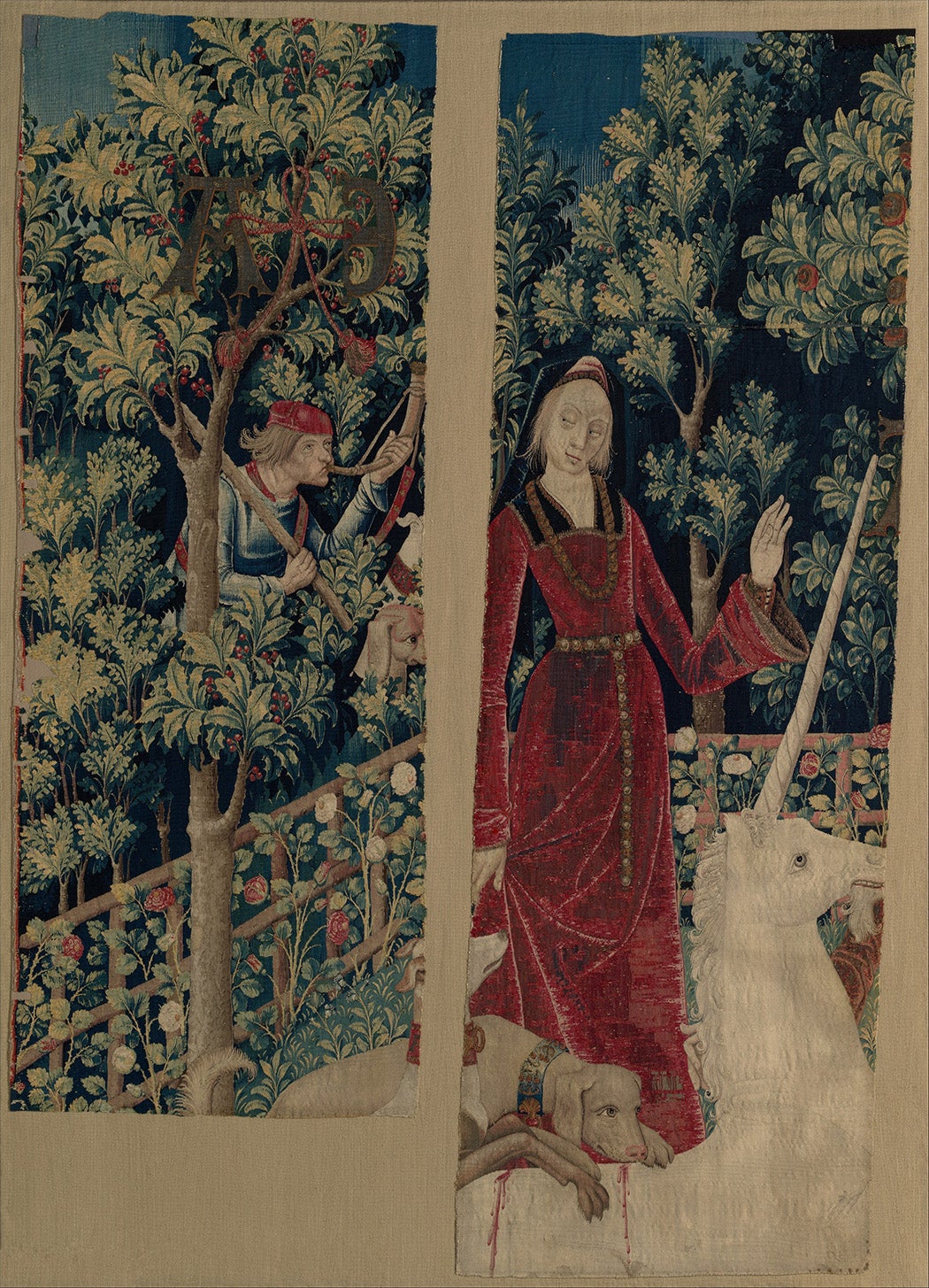
Several of the seven tapestries feature a tree as a focal point, and Marquand sees this arrangement as particularly representative of the ways secular and spiritual symbolism comes together in the series, reading the trees as evoking both the Tree of Knowledge of Good and Evil (in the Garden of Eden) and the more universal Tree of Life seen in mythology and folklore across a variety of cultures.
Writing for the Metropolitan Museum of Art Bulletin, curator emeritus of the Cloisters Margaret B. Freeman offers similarly detailed, if occasionally divergent, theories for many of the more than 100 plants depicted in the tapestries. The Bulletin also provides specific analysis of the humans and animals involved in the narrative that both deepen and complicate the tapestries’ use of secular and religious tradition. Freeman analyzes details like the roles of the people hunting the unicorn, the Latin inscription on a sword, and even the changing facial expressions of the hunters, unicorn, and maiden as the hunt unfolds, to lay out parallel allegorical meanings.
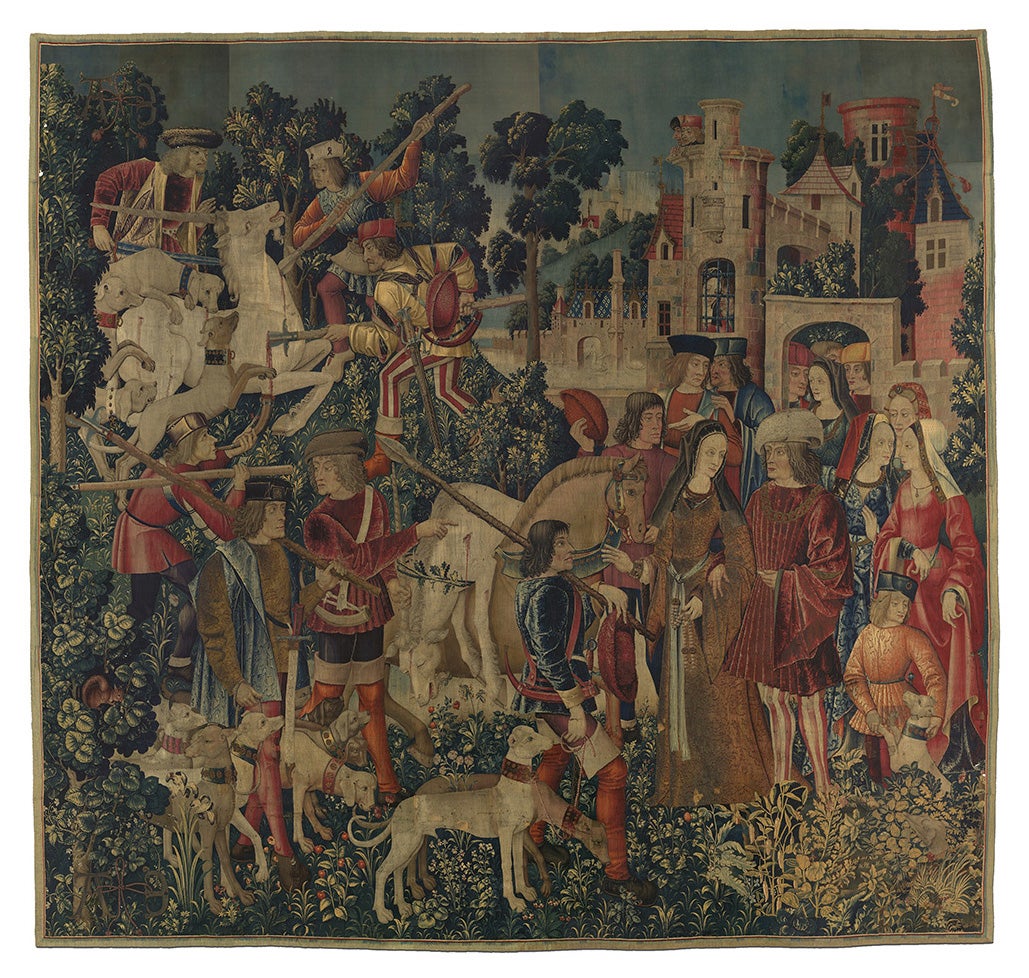
On the one hand, the tapestries can be read as an allegory of Christ, first pursued, then killed, then reborn. At the same time, the tapestries function as a marriage story. “Here,” Freeman writes of the final panel, “the unicorn may be interpreted as the risen Christ in the midst of a Paradise garden. However, since he is collared and chained to a tree it is also an image of the lover-bridegroom, at last secured by his adored lady, his bride… [in] the finale to the allegorical love hunt described by medieval poets and writers.”
In the penultimate tapestry, before the unicorn is either resurrected like Christ or chained, a trope where marriage is seen as a man’s entrapment by the wiles of a maiden, the creature is pierced by a spear and blood drips down his white front as snarling hunters look on. When my daughter, then in kindergarten, saw this panel at the Cloisters, she observed it evenly, but that night when I made a passing comparison between the unicorn in the tapestries and the stuffed animal on her bed, she looked at me, horrified. Don’t say that, she said. That unicorn, she told me, was hurt.
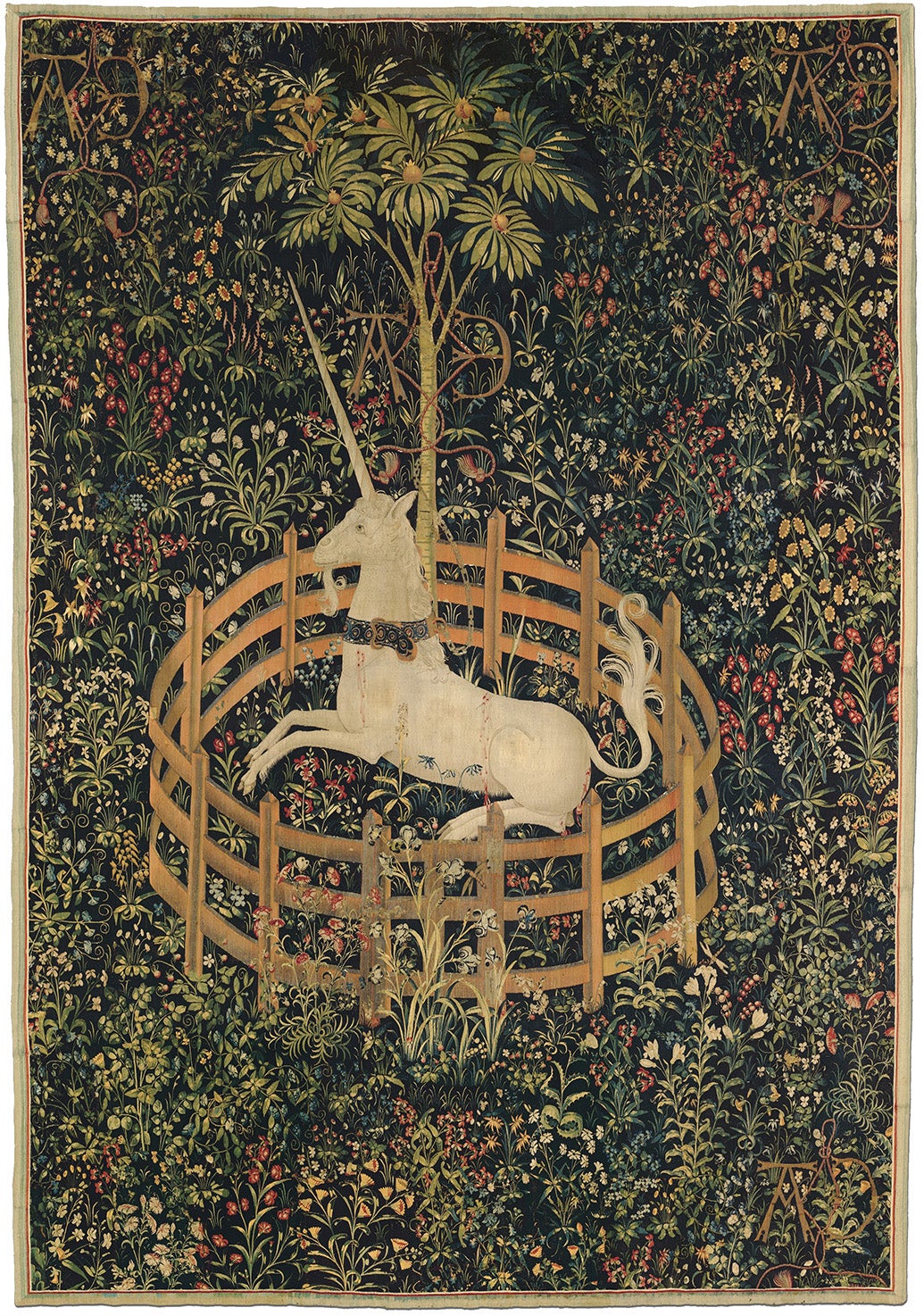
So many of the stories we tell children are much more frightening and violent, or at least more complicated, than we acknowledge. Fairy tales, like so many of the stories in scripture, involve orphaned children, neglect, violence, abuse, death, forced marriage, and rape, and so perhaps it ought not to be surprising to see a creature whose mythology is inseparable from stories of lust and power and violence ubiquitous on products marketed to children. Perhaps what’s stranger than the popularity of unicorns with small children is our collective, but unspoken, societal agreement to sanitize the symbols and archetypes we show children. We strip them of the very conflict that makes them collectively fascinating.
You won’t find this rare creature there, but there are hundreds of gorgeous images of unicorns on JSTOR.
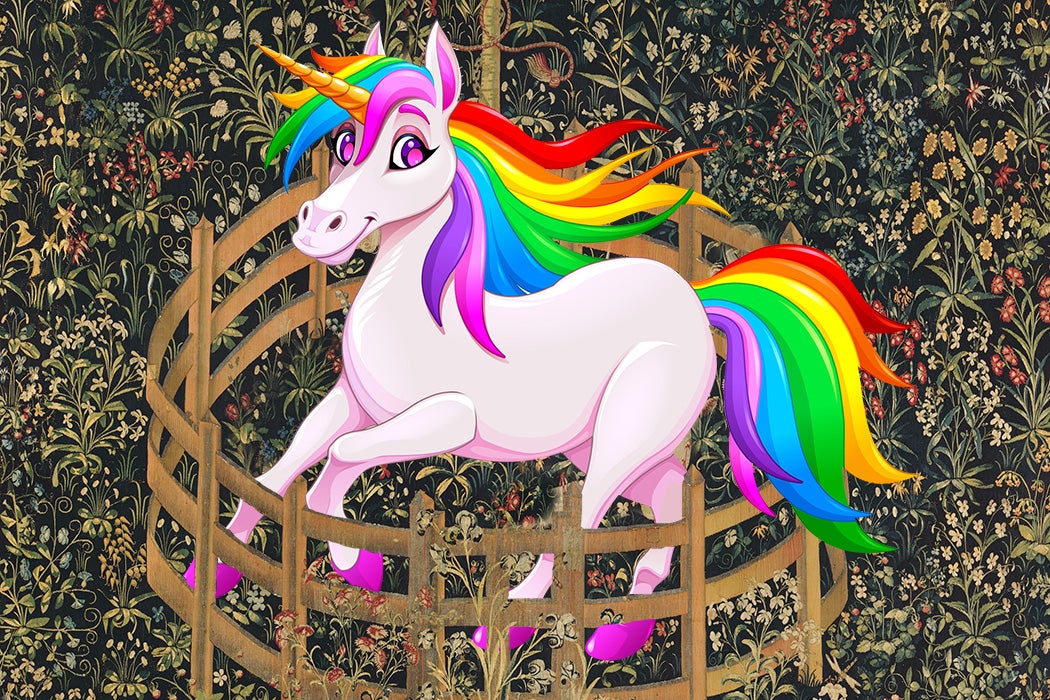
Support JSTOR Daily! Join our new membership program on Patreon today.
